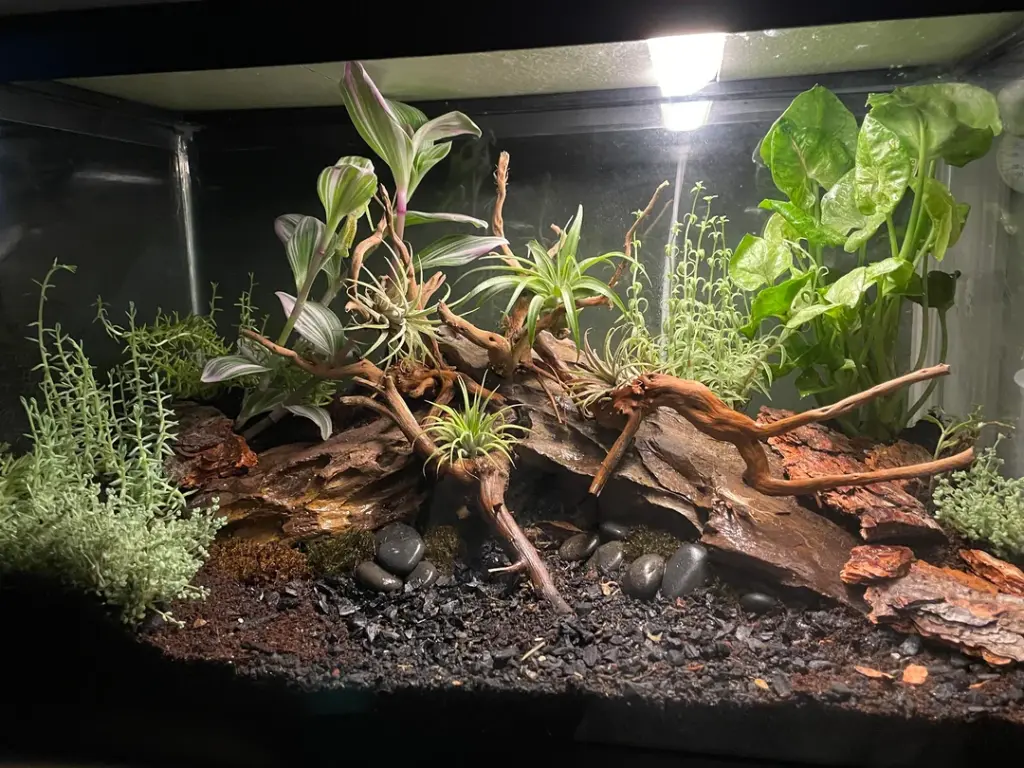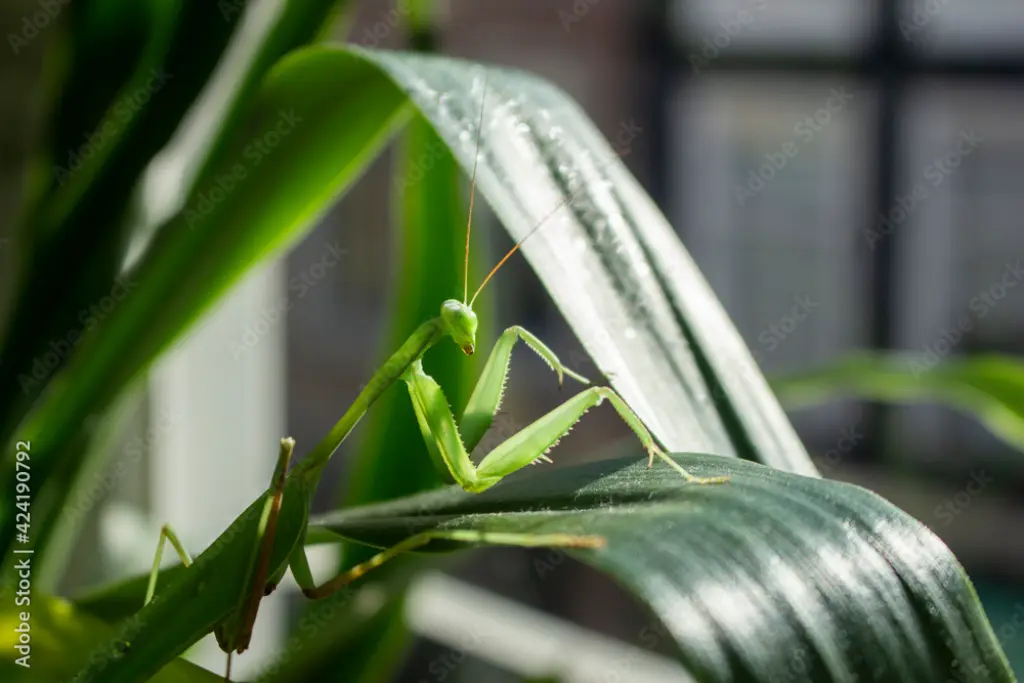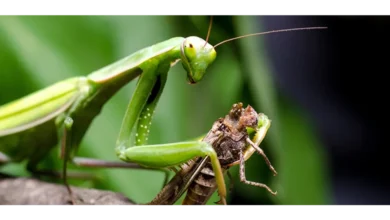Praying mantises, with their fascinating behavior and striking appearance, have become increasingly popular as pets. These insects are relatively easy to care for and can offer a unique and engaging experience for those interested in observing nature up close. In this guide, we’ll explore everything you need to know about keeping mantises as pets, from choosing the right species to setting up a habitat, feeding, and general care.
Introduction to Keeping Mantises as Pets

Praying mantises are extraordinary insects known for their predatory behavior, unique appearance, and intriguing life cycle. Keeping a mantis as a pet offers a fascinating glimpse into the natural world, with the opportunity to observe its hunting techniques, molting process, and interactions with its environment.
Mantises are relatively low-maintenance pets, making them suitable for both beginners and experienced insect enthusiasts. However, caring for a mantis does require some knowledge and preparation, particularly regarding its habitat, diet, and specific needs.
Choosing the Right Species of Mantis
When choosing a mantis as a pet, it’s essential to consider the species, as different species have varying requirements and temperaments. Some species are better suited for beginners, while others may appeal more to experienced keepers.
Popular Pet Mantis Species
Several species of mantises are popular in the pet trade due to their ease of care, availability, and fascinating behaviors.
- Chinese Mantis (Tenodera sinensis): One of the most common species kept as a pet, the Chinese mantis is large, hardy, and relatively easy to care for. It is also readily available in many regions.
- Ghost Mantis (Phyllocrania paradoxa): Known for its leaf-like appearance, the ghost mantis is a smaller, more delicate species that is popular for its unique look and peaceful temperament.
- Orchid Mantis (Hymenopus coronatus): This species is famous for its stunning floral mimicry, resembling an orchid flower. It is more challenging to care for due to its specific humidity and temperature needs.
- Giant African Mantis (Sphodromantis lineola): A robust and large species, the Giant African mantis is a great option for those looking for an active and engaging pet.
Considerations for Beginners
For beginners, it’s advisable to start with a hardy species that is less demanding in terms of care. Species like the Chinese mantis or the Giant African mantis are excellent choices due to their adaptability and ease of care.
- Size: Larger species like the Chinese or Giant African mantis are easier to handle and observe, making them ideal for beginners.
- Temperament: Choose a species known for being docile and less prone to stress, as this will make handling and care easier.
- Availability: Start with a species that is readily available and well-documented, ensuring you can find the necessary care information and support.
Setting Up the Mantis Habitat
Creating a suitable habitat for your mantis is crucial for its health and well-being. The enclosure should mimic the mantis’s natural environment, providing the right conditions for it to thrive.

Enclosure Size and Type
The size and type of enclosure you choose will depend on the species of mantis you are keeping. Generally, mantises do not require large enclosures, but they do need enough space to hunt, move, and molt properly.
- Size Guidelines: A common rule of thumb is to choose an enclosure that is at least three times the length of the mantis in height and two times in width. This provides enough space for movement and molting.
- Types of Enclosures: Glass or plastic terrariums, mesh cages, and even modified jars can be used as mantis enclosures. Ensure the enclosure has adequate ventilation to prevent mold growth and maintain air quality.
- Lid and Access: The enclosure should have a secure lid to prevent escape, but also allow easy access for feeding and maintenance.
Temperature and Humidity
Different mantis species have specific temperature and humidity requirements that must be maintained for their health and comfort.
- Temperature: Most mantises thrive in temperatures between 70°F and 85°F (21°C to 29°C). However, tropical species may require warmer conditions, which can be achieved using a heat mat or lamp.
- Humidity: Humidity levels vary depending on the species. For example, the orchid mantis requires high humidity (around 60-80%), while the Chinese mantis prefers moderate levels (around 40-60%). Use a hygrometer to monitor humidity levels and mist the enclosure as needed.
Substrate and Decor
The substrate and decor in the mantis’s enclosure help create a natural environment and provide areas for the mantis to hide, molt, and hunt.
- Substrate Options: Coconut fiber, peat moss, or paper towels are commonly used as substrates. These materials help retain moisture and can be easily cleaned or replaced.
- Decor: Include branches, twigs, and artificial or live plants to provide perches and hiding spots. Vertical space is important for molting, so ensure there are tall objects the mantis can cling to.
- Maintenance: Regularly clean the enclosure and remove any uneaten prey or waste to prevent mold and bacterial growth.
Feeding Your Pet Mantis
Feeding is a crucial aspect of mantis care, as these insects are active hunters with specific dietary needs. Providing a varied and nutritious diet will ensure your mantis remains healthy and active.

Types of Prey
Mantises are carnivorous and require live prey to hunt and eat. Their diet typically consists of a variety of insects.
- Common Prey: Fruit flies, crickets, roaches, and small moths are commonly fed to pet mantises. The size of the prey should be appropriate for the size of the mantis—typically no larger than half the size of the mantis itself.
- Variety: Offering a variety of prey items helps ensure a balanced diet and keeps the mantis stimulated. Different prey species provide different nutrients, so rotating prey types is beneficial.
- Captive-Bred Prey: It’s best to use captive-bred insects to avoid the risk of introducing parasites or pesticides that might come with wild-caught prey.
Feeding Schedule and Tips
Mantises are opportunistic feeders, and their feeding frequency can vary depending on their size, age, and species.
- Feeding Frequency: Adult mantises typically eat every 2-4 days, while nymphs may require more frequent feedings. Observe your mantis to gauge its appetite and adjust feeding accordingly.
- Overfeeding: Avoid overfeeding, as it can lead to obesity and other health issues. If the mantis consistently ignores food, reduce the feeding frequency.
- Hydration: Mantises get most of their hydration from their prey, but it’s also important to lightly mist the enclosure with water every few days to ensure proper humidity and provide an additional water source.
Caring for Your Pet Mantis
Proper care goes beyond just feeding and housing. Understanding how to handle your mantis, recognizing molting behavior, and being aware of potential health issues are all important aspects of mantis care.
Handling and Interaction
While mantises can be handled, it’s important to do so carefully to avoid stress or injury.
- Gentle Handling: When handling a mantis, be gentle and avoid sudden movements. Let the mantis climb onto your hand rather than trying to pick it up directly.
- Minimize Stress: Limit handling to short sessions and avoid handling immediately after feeding or during molting, as the mantis is more vulnerable during these times.
- Observation: Mantises are best enjoyed through observation rather than frequent handling. Watching them hunt, explore, and interact with their environment is one of the joys of keeping a mantis.
Molting and Growth
Mantises go through several molts as they grow, shedding their exoskeleton to allow for further development. Molting is a critical time in a mantis’s life and requires specific conditions.
- Molting Signs: A mantis preparing to molt will often become less active, stop eating, and hang upside down. This is a sign to ensure the enclosure has proper humidity and no disturbances.
- Molting Process: During molting, the mantis sheds its old exoskeleton, which can take several hours. After molting, the new exoskeleton is soft, and the mantis is particularly vulnerable, so avoid handling during this time.
- Post-Molt Care: Ensure the mantis has access to water and give it time to harden its new exoskeleton before offering food again.
Common Health Issues
While mantises are generally hardy, they can suffer from health issues if their environment or diet is not properly maintained.
- Dehydration: Signs of dehydration include lethargy, difficulty molting, and a wrinkled appearance. Ensure proper humidity and mist the enclosure regularly.
- Infections: Bacterial or fungal infections can occur in dirty or overly humid environments. Regular cleaning of the enclosure and monitoring for signs of mold or waste buildup are essential.
- Injury: Mantises can injure themselves if they fall during molting or if they are mishandled. Provide plenty of vertical space and avoid handling during vulnerable times.
Breeding Mantises
Breeding mantises can be a rewarding experience, but it requires careful planning and consideration due to the potential for sexual cannibalism.
- Mating Process: Introduce the male to the female’s enclosure when the female is well-fed, as this may reduce the likelihood of her attacking him. Monitor the interaction closely.
- Ootheca (Egg Case): After mating, the female will lay an ootheca, which contains her eggs. The ootheca should be kept in a warm, humid environment until the nymphs hatch.
- Raising Nymphs: Nymphs require special care, including smaller prey like fruit flies and a secure enclosure to prevent escape. Not all nymphs will survive, so it’s important to provide optimal conditions to maximize survival rates.
Keeping a praying mantis as a pet can be a fascinating and educational experience. With their unique behavior, relatively simple care requirements, and the opportunity to observe natural predator-prey interactions, mantises offer a captivating glimpse into the world of insects. By choosing the right species, providing a proper habitat, and understanding their specific needs, you can ensure that your pet mantis thrives in your care.
Whether you’re a seasoned insect enthusiast or a curious beginner, the praying mantis is a rewarding pet that will bring the wonders of nature into your home.



